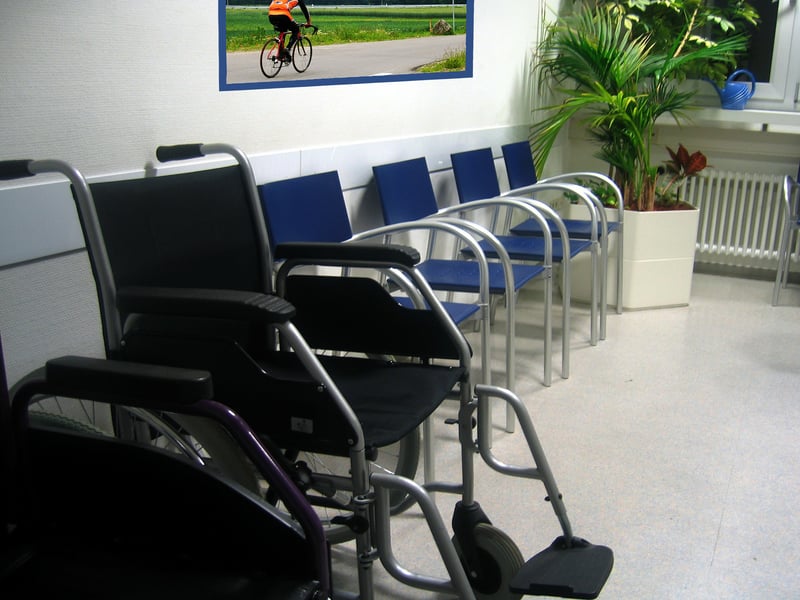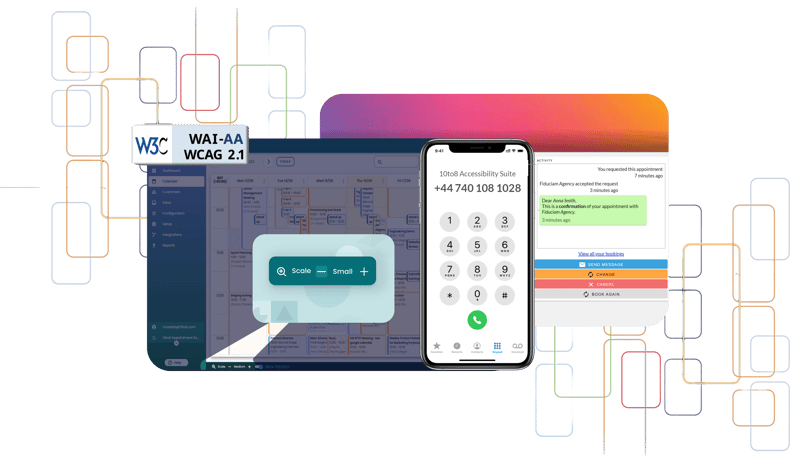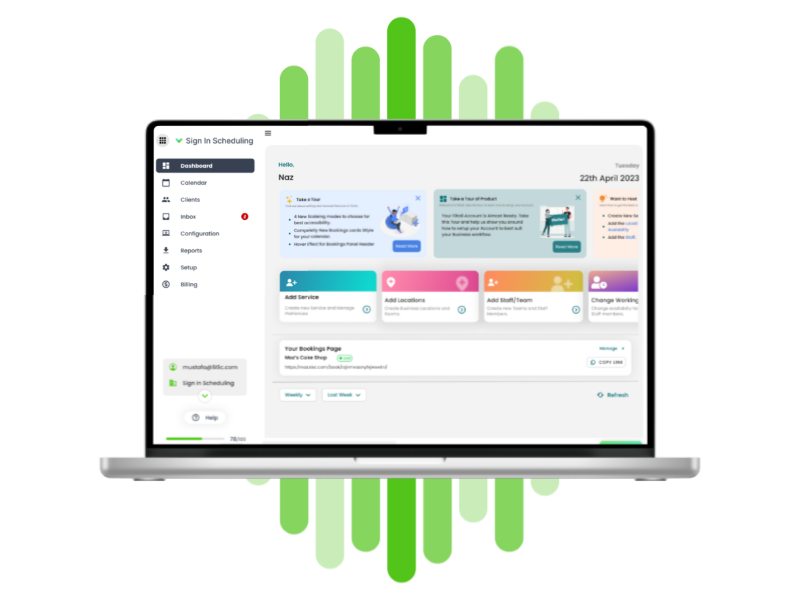We live in a world where convenience is king. If people can get something without having to leave...
Nine Easy Steps to Improve Patient Scheduling
If you’re a healthcare provider, then you know that scheduling appointments is one of the most important aspects of your job. Patients need to be able to schedule appointments easily and quickly, without having to jump through hoops.
But, it is no secret that the patient scheduling process can be a bit overwhelming for patients. Between trying to find an appointment time that works with their schedule and understanding the complex insurance system, it’s no wonder many patients put off making medical appointments until they absolutely have to.
So, let’s discuss the main factors affecting appointment scheduling for patients, the most important consideration when making appointments. These are the top 9 steps for improving patient scheduling.
How does patient appointment scheduling affect the medical practice?
Appointment scheduling can affect a medical practice in a number of ways.
First of all, appointment scheduling can affect the patient’s experience. If patients have to wait too long for an appointment, they may be less likely to return in the future. In addition, if appointments are not scheduled properly, it can lead to overcrowding and longer wait times for patients.
Secondly, patient appointment scheduling can also affect the practice’s bottom line. If patients are not able to get appointments in a timely manner, they may seek care elsewhere. This can lead to lost revenue for the medical practice.
Thirdly, poor appointment scheduling can also affect the practice’s ability to provide quality care. If appointments are not scheduled properly, it can lead to overcrowding and longer wait times for patients. This can impact the quality of care that patients receive.
Finally, poorly managed medical appointment scheduling can also lead to burnout for medical staff. If appointments are not scheduled properly, it can lead to longer hours and more work for employees. This can lead to burnout and poor turnover within the medical practice.
What is the most important consideration when scheduling patient appointments?
The main factor affecting patient appointment scheduling is the number of patients. The more patients a medical practice has, the more difficult it is to schedule appointments. This is because each patient has different needs and availability. For example, some patients may only be available for appointments on certain days or times, while others may need to be seen urgently.
This means that medical scheduling is barely ever first come first serve. The first patient that walks in the door is not always going to be seen. If a patient comes in with a much more pressing condition, they may need to be seen before the patient that scheduled an appointment week in advance.

As such, it can be incredibly difficult for medical staff to ensure that each patient receives the care they need in a timely manner. This difficulty is compounded by patients who do not keep their appointments. When a medical practice has to reschedule an appointment, it takes away from the time that they can see other patients and makes improving patient scheduling even trickier.
It is important to consider how medical appointments are scheduled in order to ensure that each patient receives the care they need.
The top 9 steps to improve patient scheduling
So, what are the top five steps for improving patient scheduling? Well, let’s take a look:
Enable patients to book their own appointments
Of course, the ability for patients to book their own medical appointments both frees up countless hours of admin time and empowers patients to take control of their own health. Online appointment booking systems that allow patients to book appointments without having to speak to anyone are the ideal way to empower your patients.
At 10to8, our online booking system offers this exact feature. With just a few clicks, your patients can easily find an appointment that works for them and book it – it’s as simple as that!
What’s more, our online booking system is fully customizable. You can easily add or remove fields, add custom questions, and even collect payments all through our online booking system.
Communicate with patients
One of the best ways to ensure that patients are able to schedule appointments in a timely manner is to communicate with them. This means informing patients about the different types of appointments available, as well as the availability of staff members.
It also includes educating patients about the patient scheduling process and what they need to do in order to schedule an appointment. This communication can be done through a variety of channels, such as the practice’s website, social media, or even through email.
Text or email reminders are a great way to ensure that patients remember their appointments. These reminders can be sent a day or two in advance, as well as the day of the appointment. Not only can reminders help reduce the number of no-shows, but they can also help patients remember their appointments.
Educate staff
It is also important to educate staff about appointment scheduling. This includes educating them on the different types of appointments available, as well as their availability. It also means making sure staff know what is a priority and what isn’t.
Use medical technology tools
Practices can also use technology to improve patient scheduling. This includes using online appointment booking systems, as well as telemedicine services, and consultation platforms.
There are so many features of technology that can be beneficial for improving patient scheduling. For example, telemedicine can work wonders for people who find traveling to a conventional surgery difficult, and automated reminders can help reduce the number of no-shows, as well as help patients to remember their appointments. Medical technology can also be used to track patient data, which can be used to improve appointment scheduling.
Consider patient needs
It is vitally important to consider the needs of each patient. This includes their availability and their condition. For example, some patients may only be available for appointments on certain days or times, while others may need to be seen urgently.
Medical practices should always try to be flexible when it comes to patient appointment scheduling and be willing to work around the availability of patients. While it is not always possible to meet the needs of every patient, it is important to try and do so and if you’re trying to boost your scheduling, this is such an easy fix.
Provide accessible online appointment scheduling
For patients that aren’t comfortable with using online booking, but want an easy way to schedule their medical appointments, it’s important to consider how you will offer online booking.
10to8’s Accessibility Suite is a complete set of tools designed to help those who aren’t comfortable or are unable to use modern technology book their appointments online. This includes WCAG compliant booking pages, an omnichannel accessible patient booking system, and a fully functional voice booking system.

Our AI-powered phone booking system changes the patient scheduling process. It not only offers an easy way to schedule appointments but also provides a hassle-free experience for patients and eliminates the long hold time that patients sometimes face. In fact, it allows patients to book appointments any time of day or night, without waiting on hold.
Use automated patient rescheduling
Automated patient rescheduling is another great way to reduce the number of no-shows and are great if you’re working on improving patient scheduling. It helps medical practices by automatically rebooking patients who have canceled or missed their appointments. This can help keep your schedule full and ensure that patients are able to get the care they need.
You can also use automated rescheduling to schedule recurring appointments for patients who require the same level of care each month. For example, if a patient comes in for a monthly checkup, you can use automated rescheduling to schedule their next appointment before they even leave the office.
Use data and statistics
Last but not least, using medical data and statistics about your practice is a great way to keep on top of your appointment scheduling. By tracking data such as the number of no-shows, the average wait time for appointments, and patient satisfaction levels, you can make changes to your patient scheduling process to ensure that your patients are getting the best possible care.
It’s also a good idea to both ask for and pay attention to customer feedback. What people are saying about your practice, particularly when it comes to scheduling, is a great way to identify areas that need improvement.
Overall…
By following these steps, medical practices can easily help with improving patient scheduling. By taking the time to consider the needs of each patient, as well as being flexible with appointment times, medical practices can provide better care for their patients. In addition, by using automated patient rescheduling and data tracking, medical practices can keep on top of their appointments and ensure that patients are getting the best possible care.






Blog comments